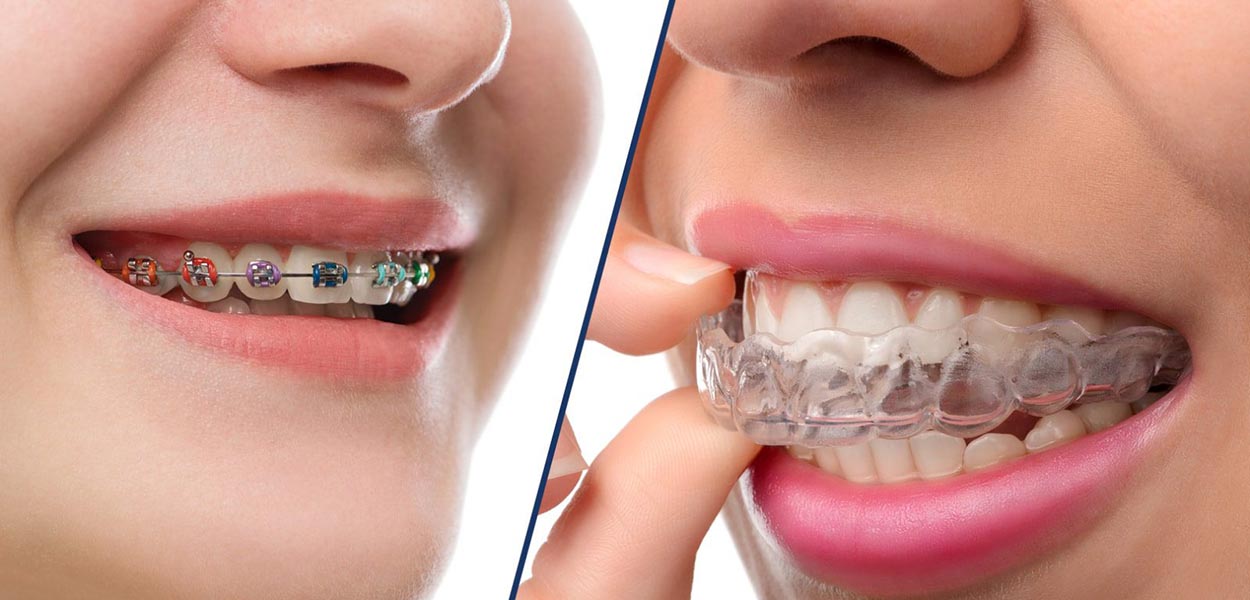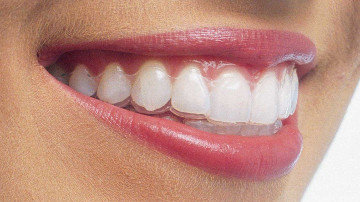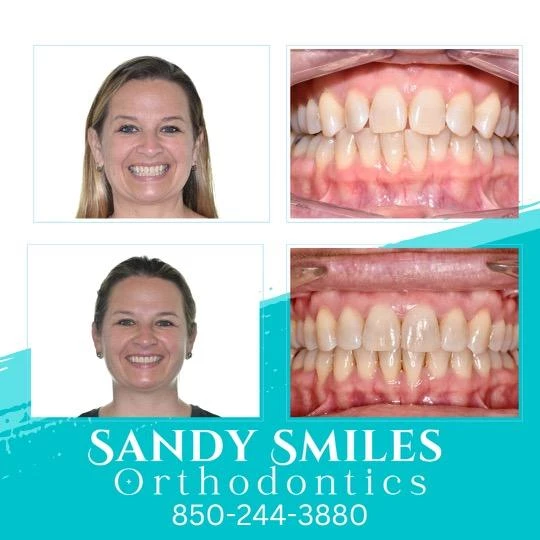Frequently Asked Questions Concerning Invisalign: Everything You Required to Know
Frequently Asked Questions Concerning Invisalign: Everything You Required to Know
Blog Article
Invisalign vs. Standard Braces: Which Choice Is Right for You?
When thinking about orthodontic therapy, the selection in between Invisalign and standard braces offers a number of vital aspects that warrant mindful examination. Invisalign provides a very discreet choice with detachable aligners, while standard braces supply an extra visible yet reliable remedy for extreme misalignment.
Overview of Treatment Choices

In comparison, traditional dental braces contain metal brackets and cables that are adhered to the teeth. This method applies continuous pressure in time to accomplish positioning. While reliable for intricate orthodontic problems, standard dental braces require routine check outs for adjustments and can present difficulties in keeping oral hygiene as a result of the trouble of cleaning up about brackets and cables.
Both options have their merits, and the selection usually depends upon details oral problems, way of life preferences, and person compliance. Eventually, getting in touch with an orthodontic expert is critical for figuring out the most appropriate therapy strategy customized to individual demands. Recognizing the subtleties of each alternative can substantially influence the total success of orthodontic treatment.
Visual Factors To Consider
A substantial factor affecting the choice in between Invisalign and traditional braces is the visual charm each treatment uses. Invisalign aligners are crafted from clear plastic, making them basically invisible when used.
In comparison, traditional braces include metal braces and wires, which can be more obvious. While improvements in orthodontic modern technology have actually caused the growth of smaller sized braces and tinted elastics, typical dental braces still keep an even more conspicuous account. For some individuals, the visibility of braces may prevent them from looking for needed therapy.
Eventually, the choice between Invisalign and typical dental braces may depend upon individual choices regarding looks. Clients that prioritize discernment often lean toward Invisalign, while those that are less concerned regarding exposure may go with standard dental braces. Recognizing the visual ramifications of each option is vital for making an educated decision that lines up with one's lifestyle and choices.
Comfort and Convenience

In regards to ease, Invisalign aligners are removable, making it possible for people to appreciate their favored foods without constraint and preserve optimum dental hygiene. Brushing and flossing are streamlined, as the aligners can be obtained throughout these routines, whereas standard dental braces call for mindful steering around cords and brackets.
In addition, Invisalign's dynamic system allows for less orthodontic visits. Patients typically get multiple collections of aligners at when, which can simplify the therapy procedure and decrease time invested in the orthodontist's chair. In comparison, typical dental braces demand routine adjustments, making them much less hassle-free for those with hectic routines. Invisalign. On the whole, the convenience Resources and convenience of Invisalign make it an attractive choice for several individuals seeking orthodontic treatment.
Therapy Duration and Efficiency
While both Invisalign and standard braces are efficient in fixing oral imbalances, the duration of treatment can differ dramatically in between both choices. Generally, Invisalign treatment can take anywhere from 12 to 18 months, depending on the intricacy of the situation. The clear aligners work by progressively shifting teeth into their wanted settings, and normal follow-ups with an orthodontist assistance guarantee development remains on course.
On the other hand, typical braces typically call for a longer dedication, usually ranging from 18 months to 3 years. This results from their fixed nature and making use of braces and cords, which can be a lot more effective for extreme imbalances and complex situations (Invisalign). The therapy effectiveness of typical dental braces is well-documented, as they enable exact changes and better control over tooth activity
Eventually, the selection in between Invisalign and typical dental braces may rest on both the expected therapy period and the details dental problems at hand. Consulting with an orthodontist is vital, as they can supply customized suggestions based on private requirements, making certain the selected method aligns with preferred durations and outcomes.
Expense Contrast and Insurance Coverage Options
Price plays a substantial function in the decision-making process for individuals taking into consideration orthodontic therapy, whether selecting Invisalign or standard braces. Usually, the cost of Invisalign arrays from $3,000 to $8,000, while typical dental braces normally set you back between $2,000 and $6,000. Elements affecting these prices include the complexity of the instance, the duration of treatment, and geographical area.
Insurance protection can substantially impact out-of-pocket expenditures. Lots of dental insurance policy original site plans offer partial coverage for orthodontic treatments, but the specifics can vary extensively. It is crucial for individuals to assess their insurance plan to identify the level of coverage for either choice. Generally, standard dental braces might be more often covered by insurance policy strategies compared to Invisalign, which some insurance providers categorize as an aesthetic procedure.
Furthermore, numerous orthodontic methods use adaptable layaway plan, making both treatment options go now more obtainable. People ought to inquire about potential funding choices and price cuts for upfront repayments. Reviewing the complete expense, including insurance advantages and layaway plan, is necessary for making an informed decision that aligns with both aesthetic choices and spending plan factors to consider.

Conclusion
In summary, the selection between Invisalign and conventional braces depends upon several factors, including aesthetic preferences, comfort, treatment duration, and expense. Invisalign supplies a discreet, removable choice that promotes dental health and nutritional versatility, while typical braces may be preferable for complex dental problems and commonly come at a reduced rate point. Eventually, examination with an orthodontist is important to evaluate individual conditions and establish one of the most appropriate therapy choice for achieving optimal oral placement.
When considering orthodontic therapy, the option between Invisalign and traditional braces provides several crucial factors that warrant cautious analysis.Contrasting Invisalign and typical braces reveals distinctive therapy alternatives for orthodontic adjustment.While both Invisalign and conventional braces are effective in dealing with oral misalignments, the duration of treatment can differ dramatically between the two options.Price plays a considerable role in the decision-making process for individuals taking into consideration orthodontic therapy, whether deciding for Invisalign or traditional dental braces.In summary, the choice in between Invisalign and traditional braces pivots on several variables, including aesthetic preferences, comfort, therapy period, and cost.
Report this page